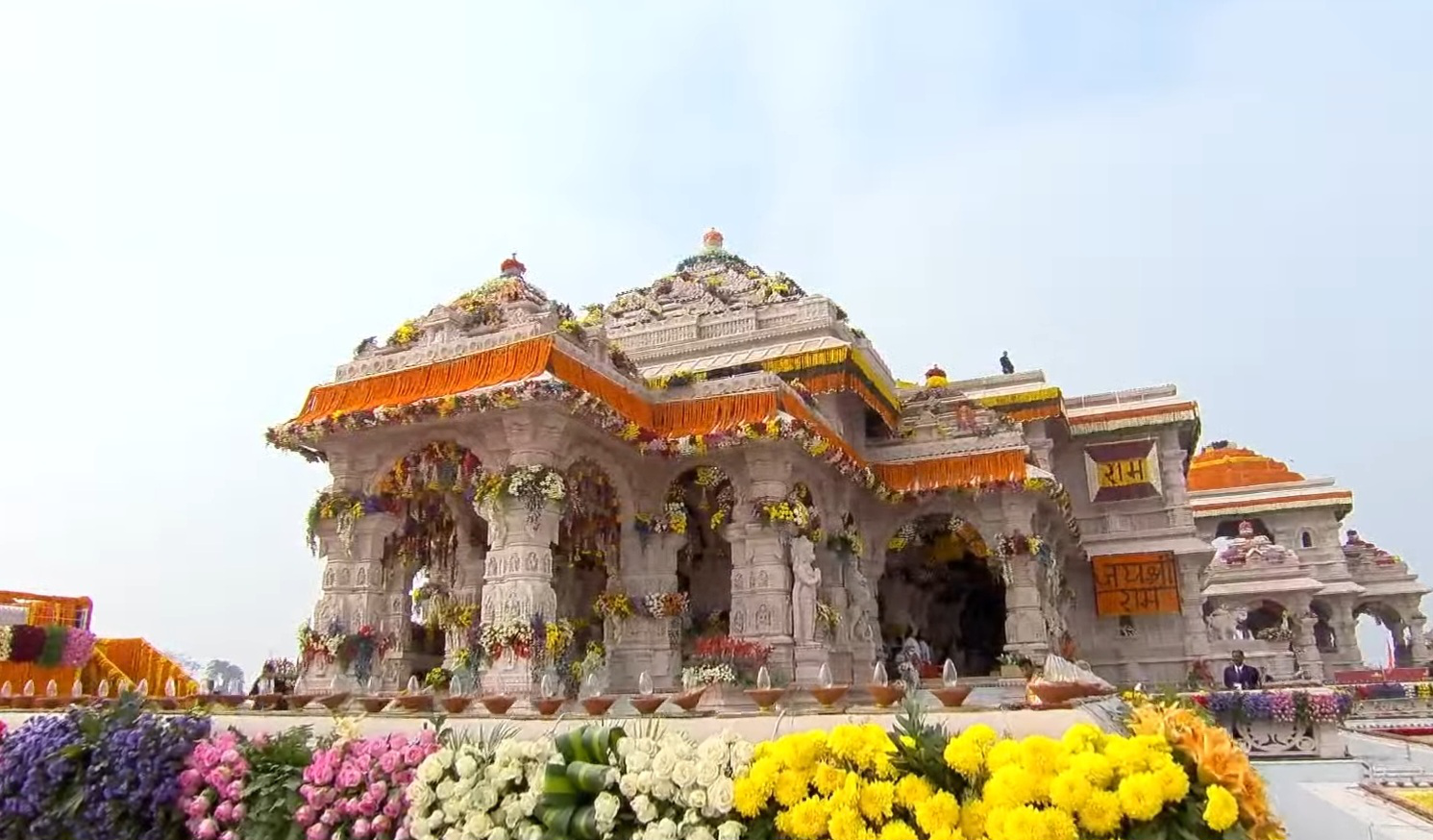
The Ram Mandir in Ayodhya, Uttar Pradesh, stands as one of the most significant religious landmarks in India, dedicated to Lord Ram, the seventh avatar of Lord Vishnu. Situated on the banks of the sacred Sarayu River, the temple is built at the believed birthplace of Lord Ram, making it a deeply revered site for Hindus. Its grand architecture blends traditional Indian temple design with intricate carvings that narrate scenes from the Ramayana.
The temple holds immense cultural and historical importance, being the culmination of centuries of devotion, faith, and historical events. For countless devotees, visiting the Ram Mandir is more than just a pilgrimage—it is a spiritual homecoming to the divine abode of Lord Ram. The chanting of hymns, the ringing of temple bells, and the peaceful atmosphere amplify the sense of sanctity.
The surroundings of the Ram Mandir further enrich the pilgrimage experience. Visitors often explore Hanuman Garhi, Kanak Bhawan, and the ghats of the Sarayu River, which are all steeped in mythology and history. The temple complex is also illuminated beautifully in the evenings, creating a mesmerizing sight that draws both devotees and tourists.
Best time to visit: October to March

Buland Darwaza, located in Fatehpur Sikri, Uttar Pradesh, is one of the most iconic architectural marvels built by the Mughal Emperor Akbar in 1601 AD to commemorate his victory over Gujarat. Standing at an impressive height of 54 meters, it is regarded as the tallest gateway in the world and is a prime example of Mughal grandeur. Made from red sandstone with intricate white marble inlays, the structure exudes a majestic presence that leaves visitors awestruck.
Buland Darwaza, located in Fatehpur Sikri, Uttar Pradesh, is one of the most iconic architectural marvels built by the Mughal Emperor Akbar in 1601 AD to commemorate his victory over Gujarat. Standing at an impressive height of 54 meters, it is regarded as the tallest gateway in the world and is a prime example of Mughal grandeur. Made from red sandstone with intricate white marble inlays, the structure exudes a majestic presence that leaves visitors awestruck.
Buland Darwaza is the main entrance to the Jama Masjid of Fatehpur Sikri and offers a panoramic view of the surrounding landscape from the top. Climbing its steep flight of stairs adds to the experience, as the sheer size of the gateway becomes even more impressive when approached up close. The structure beautifully captures the fusion of Persian, Turkish, and Indian architectural styles.
Best time to visit: November to March
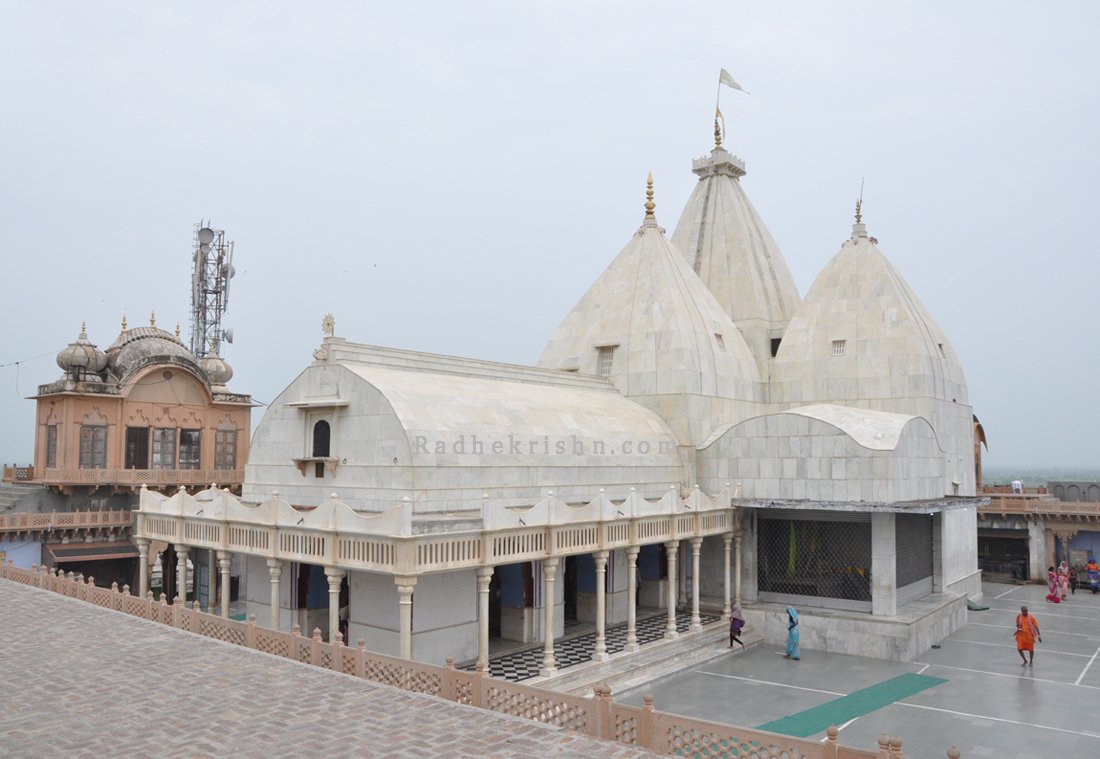
Nandgaon, located in the Mathura district of Uttar Pradesh, is a town deeply intertwined with the legends of Lord Krishna. It is believed to be the home of Nanda Baba, the foster father of Krishna, and thus holds immense religious and cultural importance in Hinduism. The town is dotted with temples dedicated to Krishna and Radha, the most prominent being the Nand Bhawan Temple, situated atop Nandisvara Hill. From here, visitors can enjoy panoramic views of the surrounding countryside, adding to the spiritual charm of the place.
Nandgaon is famous for its unique celebration of Holi, known as Lathmar Holi, where women playfully beat men with sticks while men shield themselves with shields. This tradition, rooted in the playful stories of Radha and Krishna, attracts thousands of devotees and tourists from around the world each year. The town comes alive with colors, music, and devotional songs, making it a vibrant and joyous experience for visitors.
The architecture of Nandgaon reflects a mix of traditional Braj designs and devotional art. Narrow lanes, old houses, and colorful markets selling sweets, flowers, and religious souvenirs add to the rustic charm. Pilgrims often combine their visit here with nearby holy sites like Barsana, Goverdhan, and Mathura, forming a spiritual circuit in the Braj region.
Beyond its religious significance, Nandgaon offers an authentic glimpse into rural life in Braj. The simplicity of the people, the devotional atmosphere, and the connection to timeless legends make it a serene yet lively destination. It’s a place where history, devotion, and tradition blend beautifully.
Best time to visit: February to March
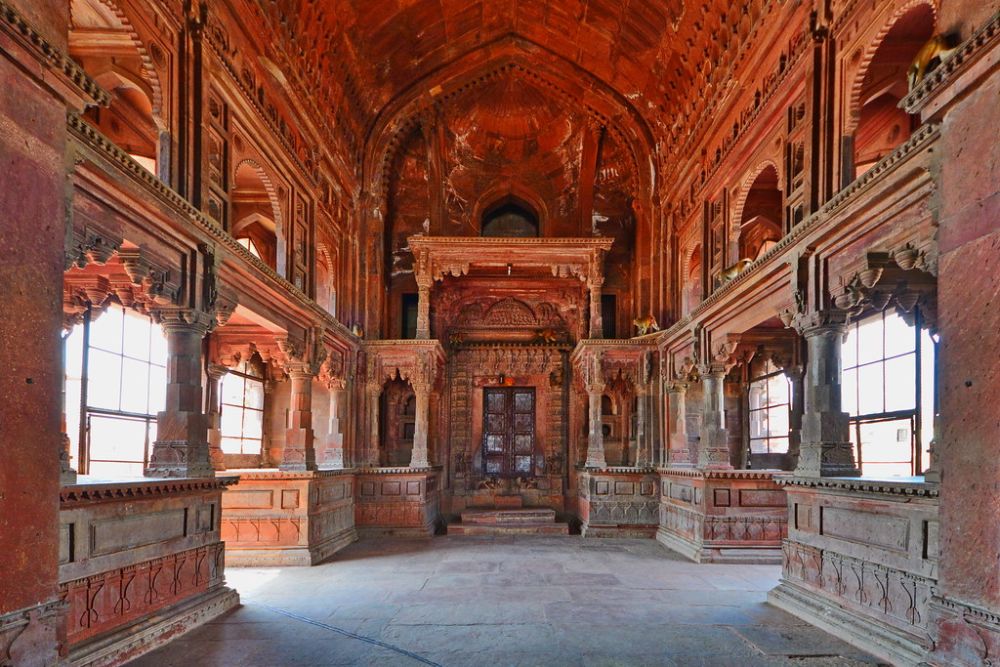
Kans Qila, located in Mathura, Uttar Pradesh, is a historic fort that stands on the banks of the Yamuna River. It is named after the infamous King Kansa, the maternal uncle of Lord Krishna, who is remembered in Hindu mythology for his tyranny. The fort is believed to have been originally built during ancient times, but its current structure shows signs of Mughal and Rajput architectural styles, indicating later renovations. The strategic location of Kans Qila made it an important defensive structure in its era, offering protection against invasions from the riverside.
The fort holds a special place in the mythology of Mathura, as it is associated with the tales of Krishna’s early life and his eventual confrontation with Kansa. While much of the fort is now in ruins, visitors can still see remnants of strong bastions, arched gateways, and thick walls, which hint at its former grandeur. Its proximity to other religious sites in Mathura makes it an interesting stop for both history lovers and pilgrims.
Over the years, Kans Qila has faced damage due to natural wear and lack of preservation, yet it retains a certain charm. The view of the Yamuna River from the fort premises is peaceful and adds to the experience, especially during sunrise or sunset. For those with an interest in photography, the blend of historical architecture and the riverside landscape provides many picturesque moments.
Best time to visit: October to March
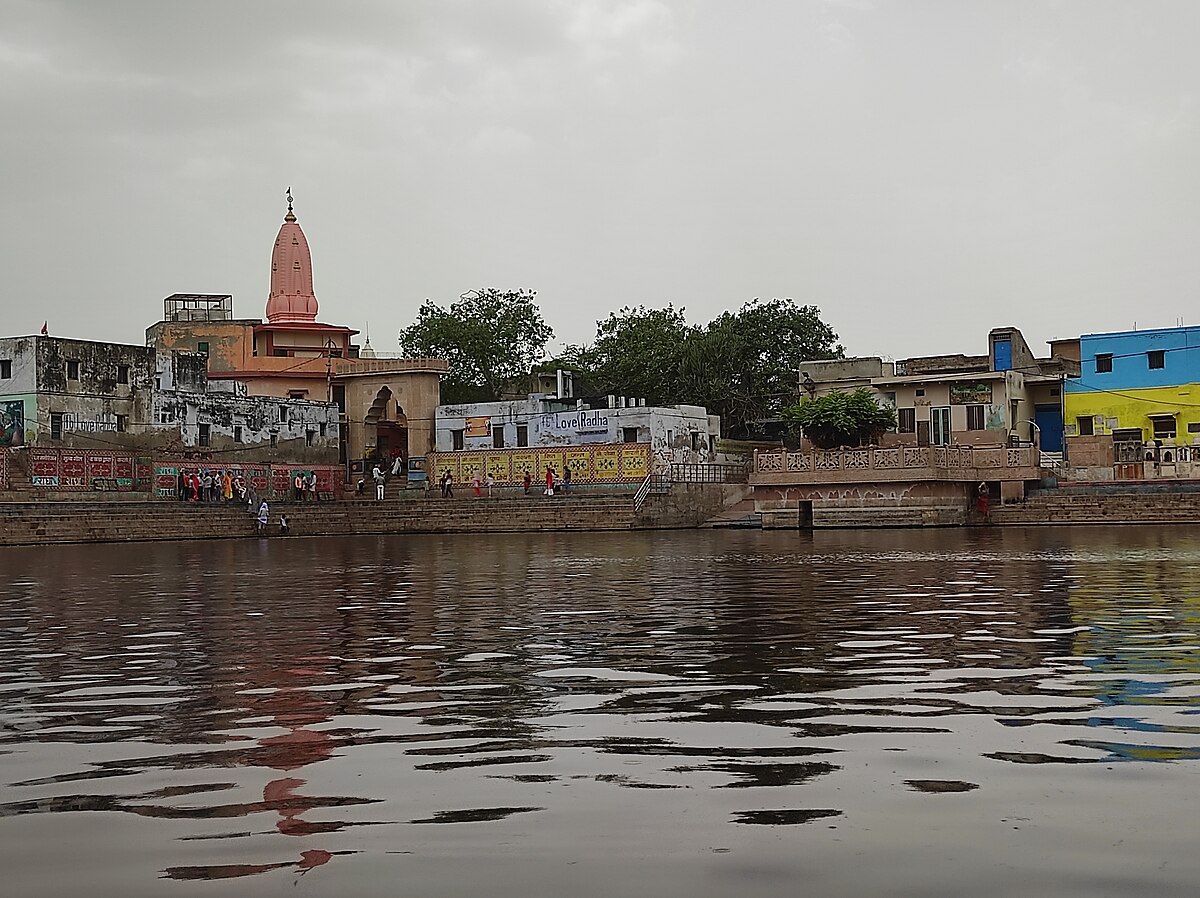
Radha Kund, located near Govardhan in Uttar Pradesh, is one of the most sacred sites for devotees of Lord Krishna and Radha. According to Hindu mythology, it is believed that this holy pond was created by Radha herself after Krishna killed the demon Aristasura. Radha, wanting to purify herself from the sin of killing a bull (a form the demon had taken), dug this kund with the help of her friends, and it was later filled with water from Krishna’s Shyam Kund. This sacred water body is considered the holiest of all kunds and is revered for its spiritual purity.
The atmosphere at Radha Kund is deeply devotional, with pilgrims and saints chanting bhajans, performing aarti, and taking ritual baths in the belief that it cleanses all sins and brings them closer to Radha-Krishna’s divine love. The kund is especially significant during the Kartik month, when thousands of devotees come to take a holy dip, believing it to be spiritually rewarding.
Architecturally, Radha Kund is surrounded by ghats and temples dedicated to Radha and Krishna, making it a serene yet vibrant spiritual hub. The water of the kund, though still and calm, is said to be imbued with divine energy, and the surrounding narrow lanes are filled with the fragrance of incense, flowers, and the constant sound of devotional songs.
Visiting Radha Kund is not only about witnessing a place of great mythological importance but also about experiencing the intense bhakti (devotion) that pervades the air. It’s a destination where mythology, faith, and tradition merge seamlessly, leaving a lasting spiritual impression on visitors.
Best time to visit: October to March
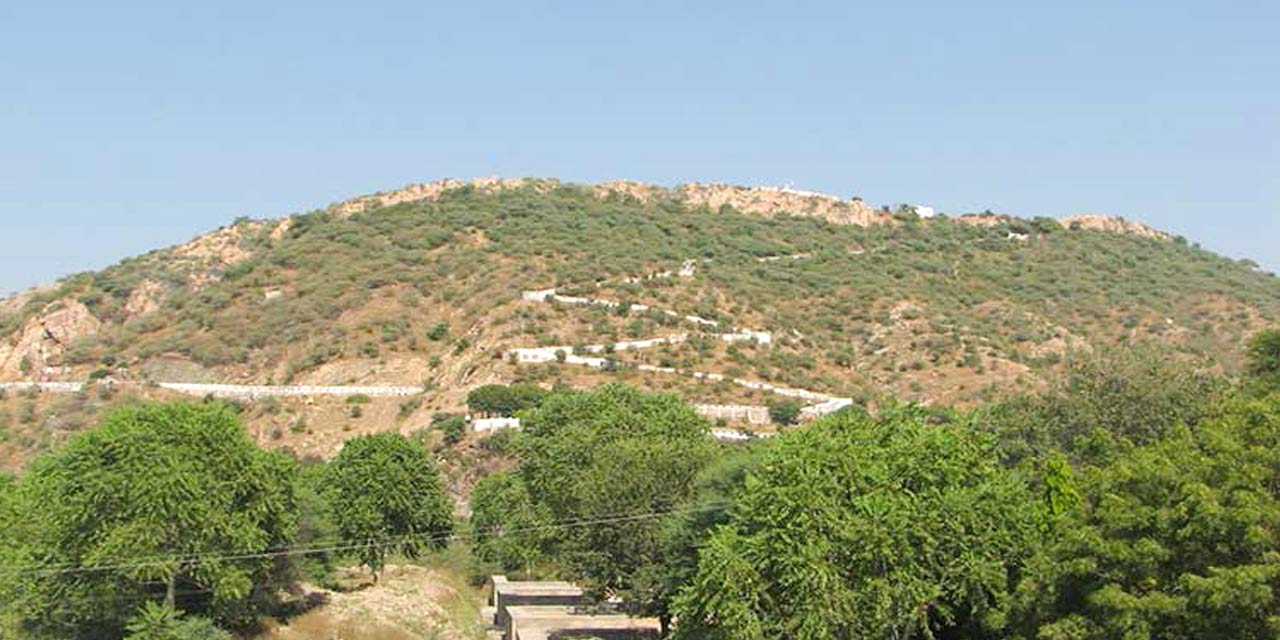
Govardhan Hill, located in the Mathura district of Uttar Pradesh, holds immense significance in Hindu mythology and is closely associated with the life of Lord Krishna. According to the Bhagavata Purana, Krishna lifted the Govardhan Hill on his little finger to protect the villagers of Vrindavan from the wrath of Lord Indra, who had sent torrential rains to flood the area. This divine act is celebrated as Govardhan Puja, a major festival observed right after Diwali.
The hill stretches for about 8 kilometers and is considered sacred in its entirety. Pilgrims from all over India perform the Govardhan Parikrama, a ritual circumambulation of the hill, either barefoot or while chanting devotional hymns. Along the way, there are numerous holy spots like Radha Kund, Shyam Kund, and Kusum Sarovar, each with its own fascinating legends. The parikrama is believed to bring blessings, prosperity, and spiritual upliftment.
Unlike typical mountains, Govardhan Hill is made of sandstone and is relatively low in height, yet its spiritual importance far outweighs its physical size. The surrounding area is dotted with temples dedicated to Krishna and Radha, attracting saints, devotees, and tourists throughout the year. The peaceful rural backdrop, with cows grazing and the sound of temple bells, creates a serene and timeless atmosphere.
Best time to visit: October to March
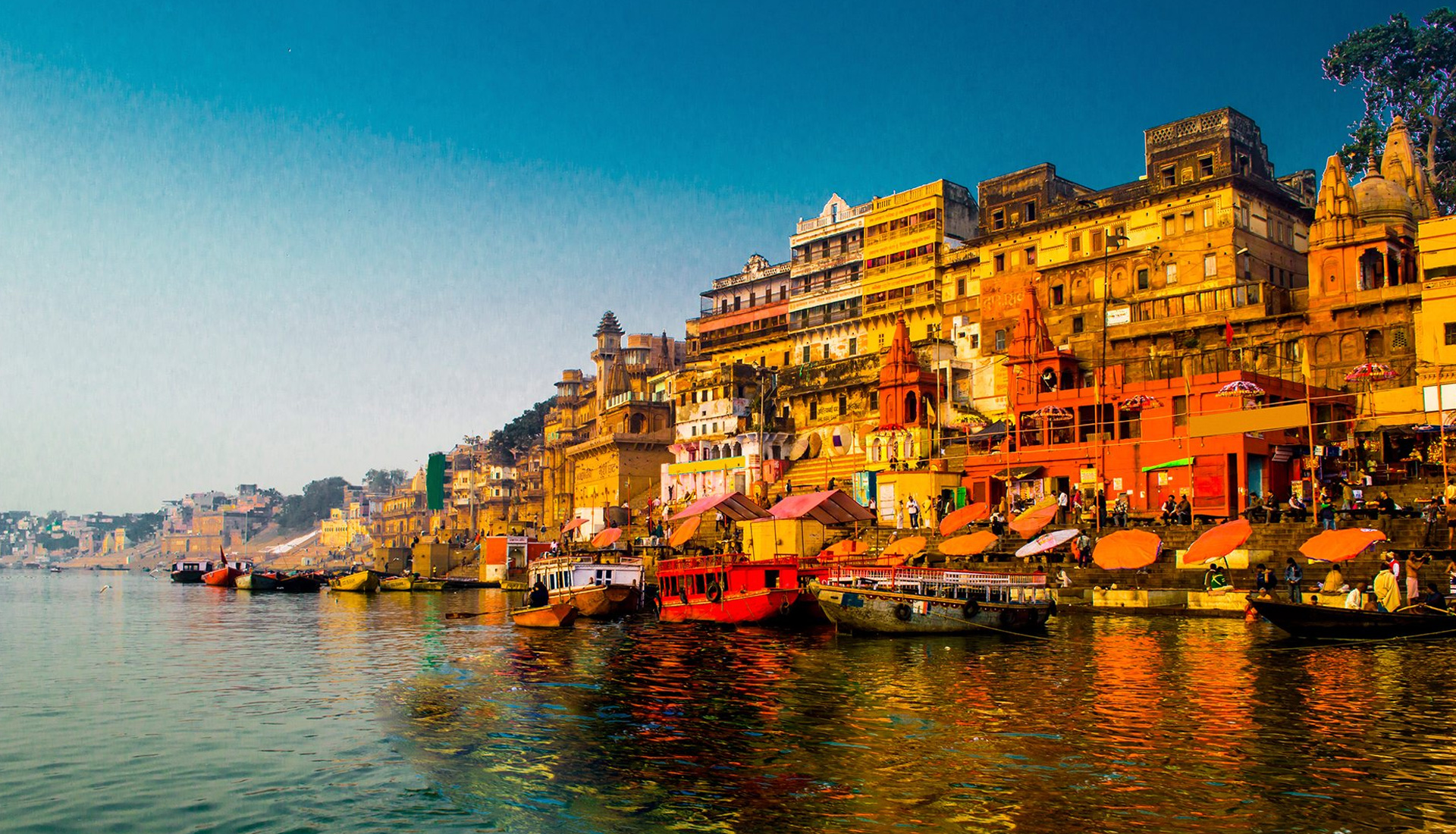
Banaras, also known as Varanasi or Kashi, is one of the world’s oldest continuously inhabited cities and the spiritual capital of India. Situated on the banks of the sacred River Ganga in Uttar Pradesh, it is revered as the city where life, death, and eternity intertwine. According to Hindu belief, a dip in the holy Ganga here can wash away sins, and dying in Varanasi is said to grant moksha—liberation from the cycle of rebirth. The city’s ancient charm is reflected in its narrow lanes, centuries-old temples, and bustling ghats
The ghats of Varanasi, especially Dashashwamedh Ghat and Manikarnika Ghat, are the heartbeat of the city. Dashashwamedh Ghat is famous for the mesmerizing Ganga Aarti, where priests perform synchronized rituals with fire lamps, chants, and conch shells as the river shimmers in the evening glow. Manikarnika Ghat, on the other hand, is one of the main cremation grounds, holding deep spiritual significance. Witnessing the rituals here can be a humbling reminder of life’s impermanence.
Banaras is also a major center for learning, music, and crafts. The Kashi Vishwanath Temple, dedicated to Lord Shiva, is one of the twelve Jyotirlingas and attracts millions of devotees. The city is equally famous for Banarasi silk sarees, known for their intricate zari work, making it a paradise for shoppers. Sarnath, a short drive away, is where Lord Buddha delivered his first sermon after attaining enlightenment, adding another layer of spiritual depth to the city.
Best time to visit: October to March
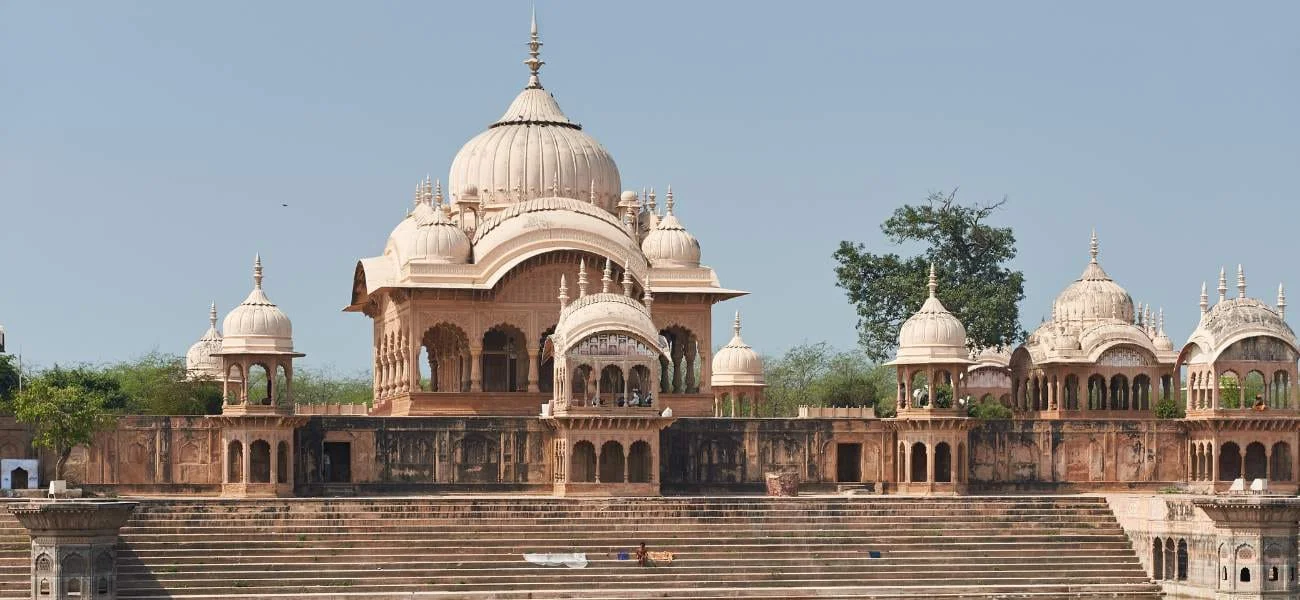
Vrindavan, located in Uttar Pradesh along the banks of the sacred Yamuna River, is one of the most revered pilgrimage sites in India, deeply associated with the life and legends of Lord Krishna. According to Hindu mythology, this is the divine land where Krishna spent his childhood, playing his flute, performing his leelas (divine pastimes), and enchanting the Gopis with his charm. The town is dotted with thousands of temples, each narrating a chapter from Krishna’s life, making it a spiritual haven for devotees from around the globe.
Some of the most famous temples here include the Banke Bihari Temple, known for its vibrant atmosphere and unique darshan style, and the ISKCON Temple, which draws visitors with its serene chanting and devotion-filled environment. The Prem Mandir, with its intricate marble carvings and illuminated night views, is another must-visit landmark. Each temple in Vrindavan exudes devotion, with a constant hum of bhajans, bells, and the fragrance of incense filling the air.
Best time to visit: October to March
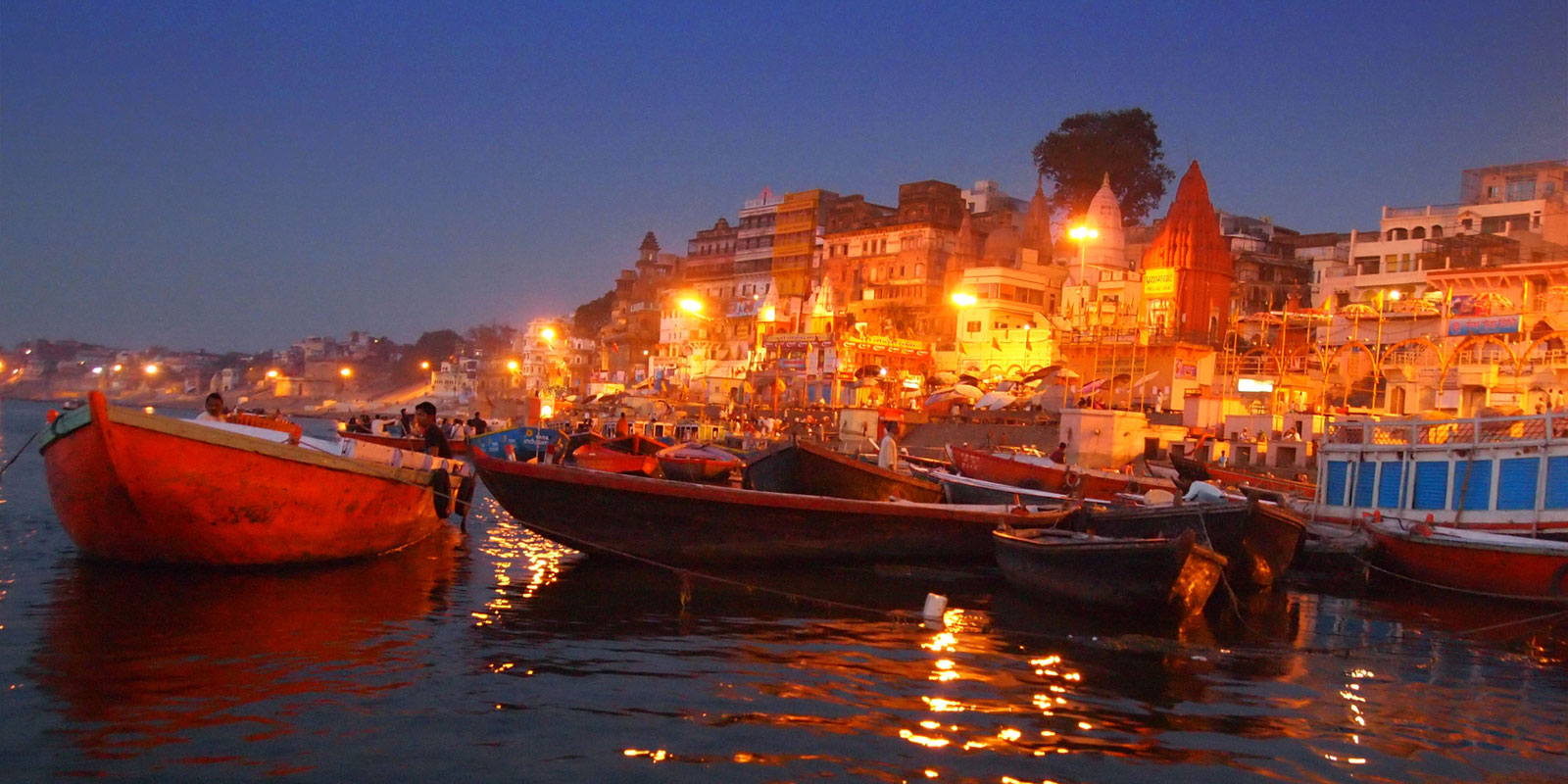
Kashi, also known as Varanasi or Banaras, is one of the world’s oldest continuously inhabited cities and holds unparalleled spiritual significance in Hinduism. Situated on the banks of the sacred Ganga River in Uttar Pradesh, it is revered as the city of Lord Shiva and is believed to be a gateway to moksha (liberation from the cycle of rebirth). The city’s ancient ghats, temples, and bustling lanes radiate a timeless charm, drawing pilgrims, saints, and seekers from across the globe.
The Kashi Vishwanath Temple, dedicated to Lord Shiva, stands at the spiritual heart of the city, with its golden spire glistening under the sun. Alongside, the Manikarnika and Harishchandra Ghats are among the most sacred cremation sites in India, embodying the belief that death in Kashi ensures liberation. The city also hosts the Sankat Mochan Hanuman Temple and numerous other shrines, each steeped in deep mythology and centuries-old traditions.
Best time to visit: October to March,

The Taj Mahal, located in Agra, Uttar Pradesh, is one of the most iconic monuments in the world and a UNESCO World Heritage Site. Built by the Mughal Emperor Shah Jahan in the 17th century in memory of his beloved wife Mumtaz Mahal, it stands as an eternal symbol of love. Constructed entirely from white marble and adorned with intricate carvings and inlay work of precious stones, the monument reflects the pinnacle of Mughal architecture. Its harmonious proportions, symmetrical gardens, and reflection in the Yamuna River create a breathtaking visual masterpiece.
At the heart of the Taj Mahal lies the central dome, flanked by four slender minarets, each tilting slightly outward to prevent collapse onto the main structure in case of an earthquake. Inside, the cenotaphs of Mumtaz Mahal and Shah Jahan rest beneath the grand dome, with the actual graves located in a lower chamber. The fine craftsmanship includes calligraphy of Quranic verses, floral motifs, and detailed marble lattice screens.
The Taj Mahal changes hues with the shifting light of the day—from a soft pink at sunrise, to dazzling white under the midday sun, to a golden glow in the moonlight. Many visitors describe the experience of seeing it in person as magical and deeply moving. The surrounding Mehtab Bagh offers a stunning view of the monument across the river, especially during sunset.
Best time to visit: October to March
